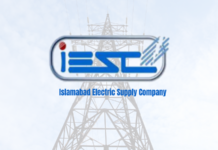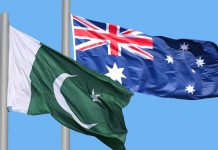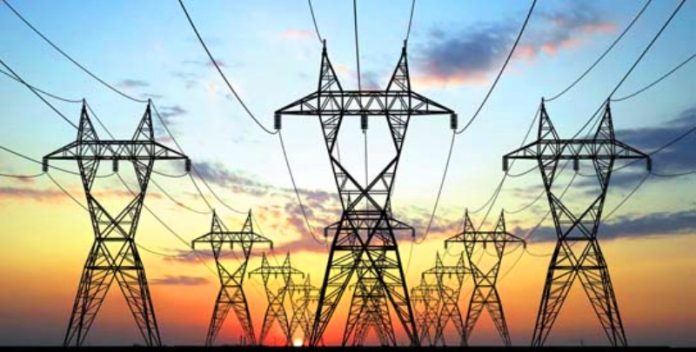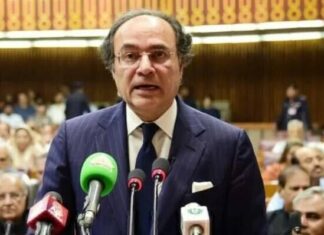National Electric Power Regulatory Authority (Nepra) has approved Rs 3.5 per unit cut in the multiyear tariff of K-Electric (KE) for a period of seven years (2016-2023) which in result will deprive the power company (KE) of Rs 48 billion annual earning/profit.
The authority has rebased the integrated multiyear tariff of KE and reduced it from existing tariff of Rs. 15.57kW/h to Rs.12.07 kW/h against a claim of the KE for Rs.16.23 kW/h. As a result of NEPRA’s determination, the national exchequer will reap around Rs 48 billion profit annually.
Sources said KE has earned above Rs 100 billion exorbitant profit during the last three years. However, this decision of NEPRA will cease such abnormal earnings of the power company. Nepra said that the determined tariff is structured to be balanced, transparent, and in the interest of the consumers as well as KE.
Similarly, to ensure transparency while keeping in mind the comments of interveners and commentators, tariffs and costs have been segmented into three components; generation, distribution and transmission. In this regard, KE has been made bound to invest an amount of Rs.237.6 billion; generation (Rs. 48.1billion), distribution (Rs. 69.4 billion), transmission (Rs.115.7 billion) and others (Rs. 4.2 billion) over the definite period of seven years.
“KE was further made accountable and subject to a mid-term review in order to ensure that the proposed investments have been carried out,” said Nepra. T&D target losses have been reduced and the target for FY 2016-17 has been fixed at 20.40pc. The consumers have been provided with an immediate benefit by the reduction of 9.6pc losses from the 30.0pc already built in the existing tariff.
Furthermore, the consumer-end tariff will now be adjusted with yearly targeted T&D losses in accordance with provisions and the adjustment mechanism framework provided in the determination. At the same time, the authority being mindful of the interest of KE has ensured a reasonable return to KE on its existing asset base as well as adequate cash flows to carry out the proposed investments.
Keeping in mind the interest of the consumers, the authority has disallowed KE from collecting bank collection charges from the consumers through monthly billing and has also directed the KE to pay interest on security deposits to the consumers through their bills. Moreover, KE has been restrained from charging meter rent from all the consumers, whether existing or new.
“KE is also directed to start billing immediately on TOU rates to consumers, having installed TOU meters. Furthermore, TOU meters should be provided to all existing consumers having a sanctioned load of 5kW and more by December 31, 2017. In future, new consumers having the said sanctioned load of 5 kW or more, the meter shall be provided with TOU metering facility,” Nepra said, adding, “The new connection charges shall be determined by the authority in separate proceedings and till then, KE is directed to ensure that the new connection charges levied to the prospective consumers are comparable with the other DISCOs.”
KE is the only vertically integrated utility in Pakistan and is principally engaged in the generation, transmission and distribution of electrical energy to over 2.4 million consumers. The authority allowed a multiyear tariff to KE in 2002. After privatisation of KE in 2005, the multiyear tariff was set to expire in 2012. Consequently, on the signing of amended implementation agreement by the new management of KE with the Ministry of Water and Power, KE filed a tariff petition in 2009 for certain amendments in tariff. While deciding on the proposed amendments, the Authority extended the multiyear tariff to next seven years till June 2016, in line with the tariff control period provided in the amended implementation agreement.
After expiry of the above-mentioned tariff, KE submitted a petition on 31 March 2016 for an integrated multiyear tariff for a period of ten years. In its petition, KE requested the authority to continue the existing multiyear tariff till 2026, with an increase of Rs. 0.66/kWh in respect to its O&M costs.
After taking into account the extensive input and feedback received from interveners and commentators and conducting public hearings, the authority approved the tariff determination for 07 years (2016-2023).
The authority observed in the tariff determination that the multiyear tariff previously awarded to KE was a performance based tariff. KE was not allowed a pre-determined fixed return on its existing and future investments, unlike the tariff allowed under the cost-plus regime. KE was required to earn a profit by bringing in efficiency through investment from its own resources of generation, transmission and distribution system. For this reason, KE was guaranteed that no downward revision would be made till the expiry of the control period of the tariff. The previous tariff was awarded to KE in view of the prevailing circumstances at that time i.e. inefficient generation plants, T&D losses hovering at a level of around 40pc etc. Therefore, KE was allowed a number of incentives for optimisation through its own investment.
The authority observed that previously KE was given targets for T&D losses based on the premise that KE will make investments in its transmission and distribution business to reduce losses. However, KE focused its investment on its generation, but ignored the investment in distribution and transmission, resulting in deterioration of the system over the time, consequently increasing technical losses. Considering the change in ground realities, the authority deemed it appropriate to reassess the tariff based on heat rate, T&D losses and investment to make it more cost reflective so that neither the utility nor the consumers bear any unnecessary burden. To this end, each generation facility has been assessed individually in terms of heat rate and auxiliary consumption instead of a cumulative assessment of the entire generation fleet. In case a new generation facility is added, the benefit of its efficiency in form of relief will be shared with the consumers.
For this reason among others, the authority has decided not to continue the existing multiyear tariff and should rather rebase the same by taking into account the efficiencies achieved by KE and at the same time allowing KE a reasonable return on its existing and future proposed investments.
The authority also did not cede to the request of KE to allow tariff for ten years and decided that seven years is a reasonable tariff period allowed to provide some certainty to the utility to raise debt and invest. Further, the authority has provided an inbuilt protection mechanism to ensure that excess profits over the regulatory benchmarks are shared with consumers.This excessive profit sharing has been ensured through a profit claw back mechanism. Previously, excessive profits could not be shared with consumers owing to litigation in courts with respect to claw back mechanism. In this regard, a new mechanism has been devised which will ensure excessive profit sharing with the consumers in an effective manner.
The authority also observed that KE was required to reduce the provision for doubtful debts and achieve 100pc recovery target which unfortunately has not been the case. Therefore, allowing any further cushion in the tariff for the inefficiencies of KE in terms of under-recoveries would not be fair to the consumers. Thus, the authority has decided that KE will not be allowed any provision for the doubtful debts and like other DISCOs, only actual bad debts written off by KE has been allowed.
The authority has also turned down the request of KE for allowing force majeure and compensation for late payments by government entities and tariff differential claims by the federal government. KE had claimed that these may be allowed to be passed on to the consumers. The authority, while refusing this request, has observed that these matters may be settled between GoP and KE rather than being passed on to the consumers in the tariff.
The tariff determination takes into account the interests of the consumers and a deliberate effort has been made by the authority to resolve all the outstanding issues without compromising the ability of KE to provide service in its territory in accordance with the performance standards set forth in the NEPRA Act, 1997, rules and regulations.
























